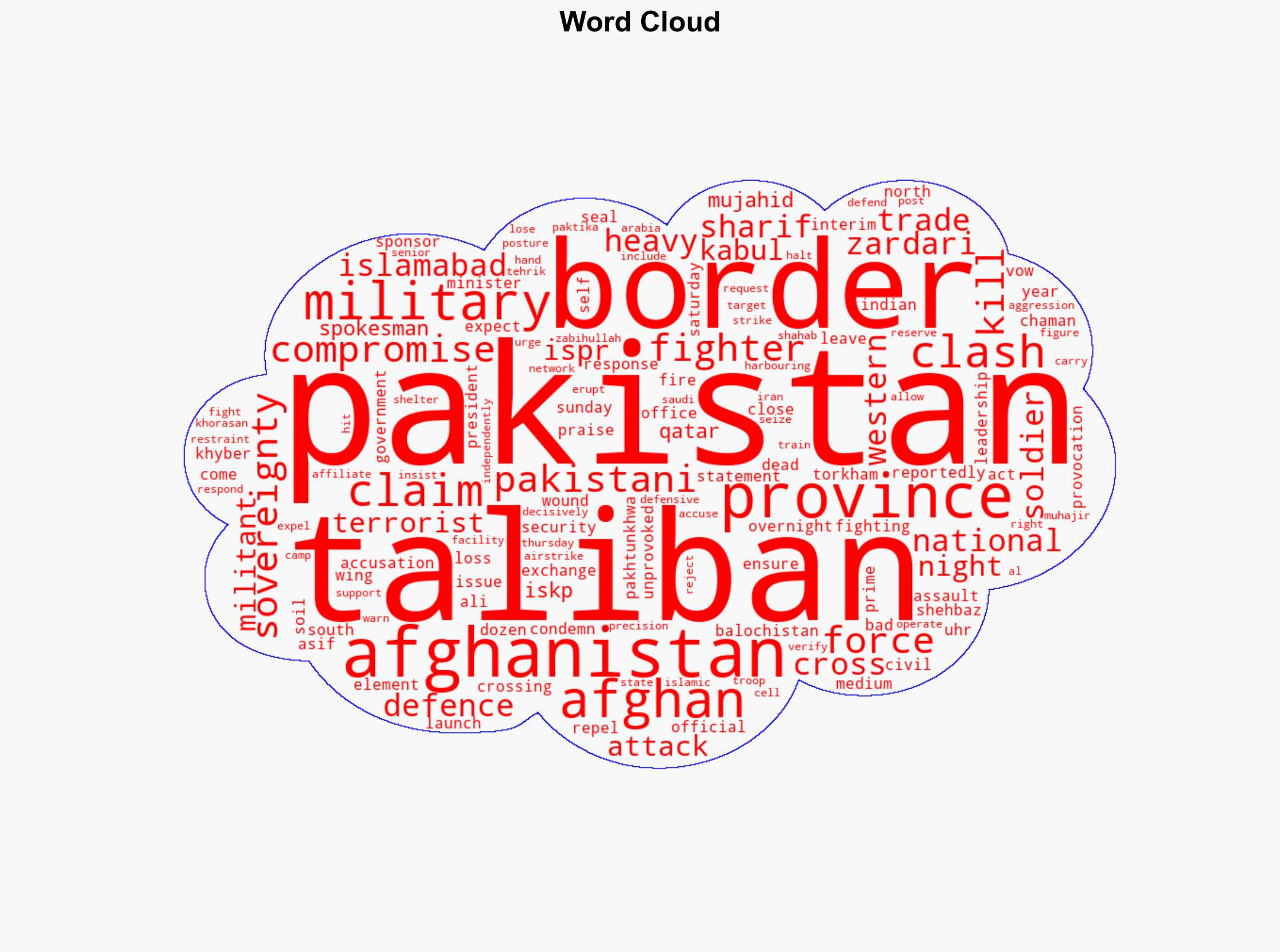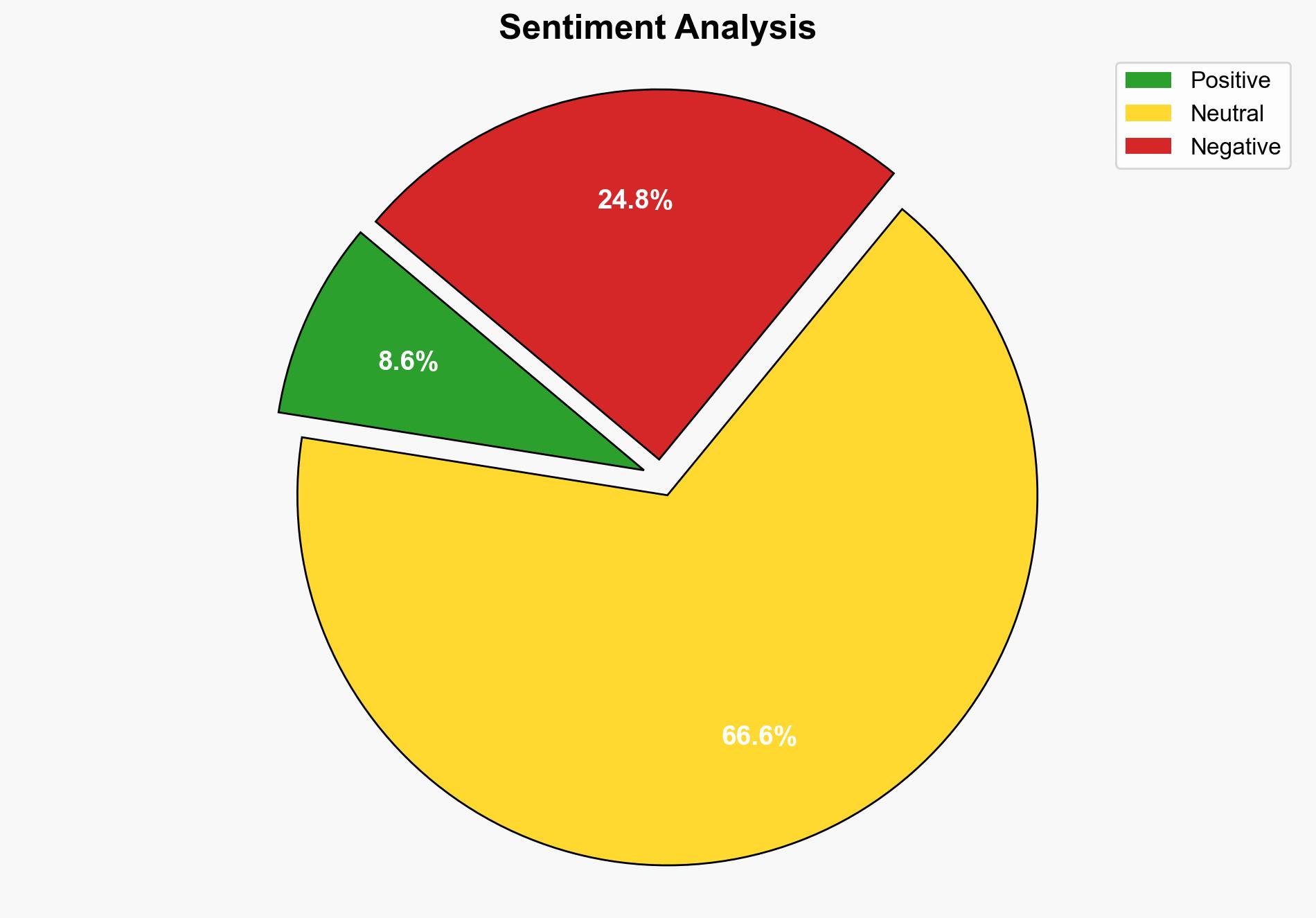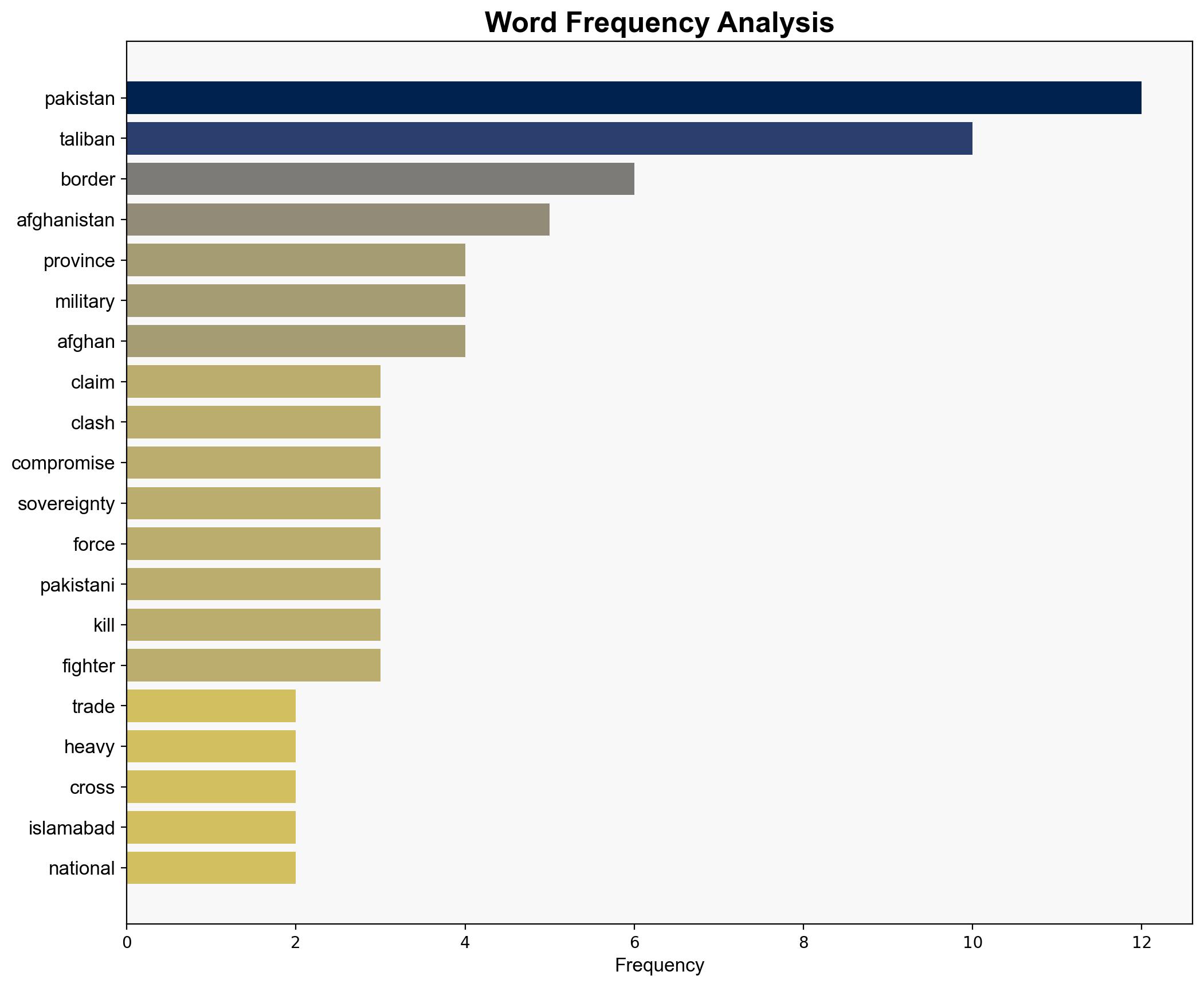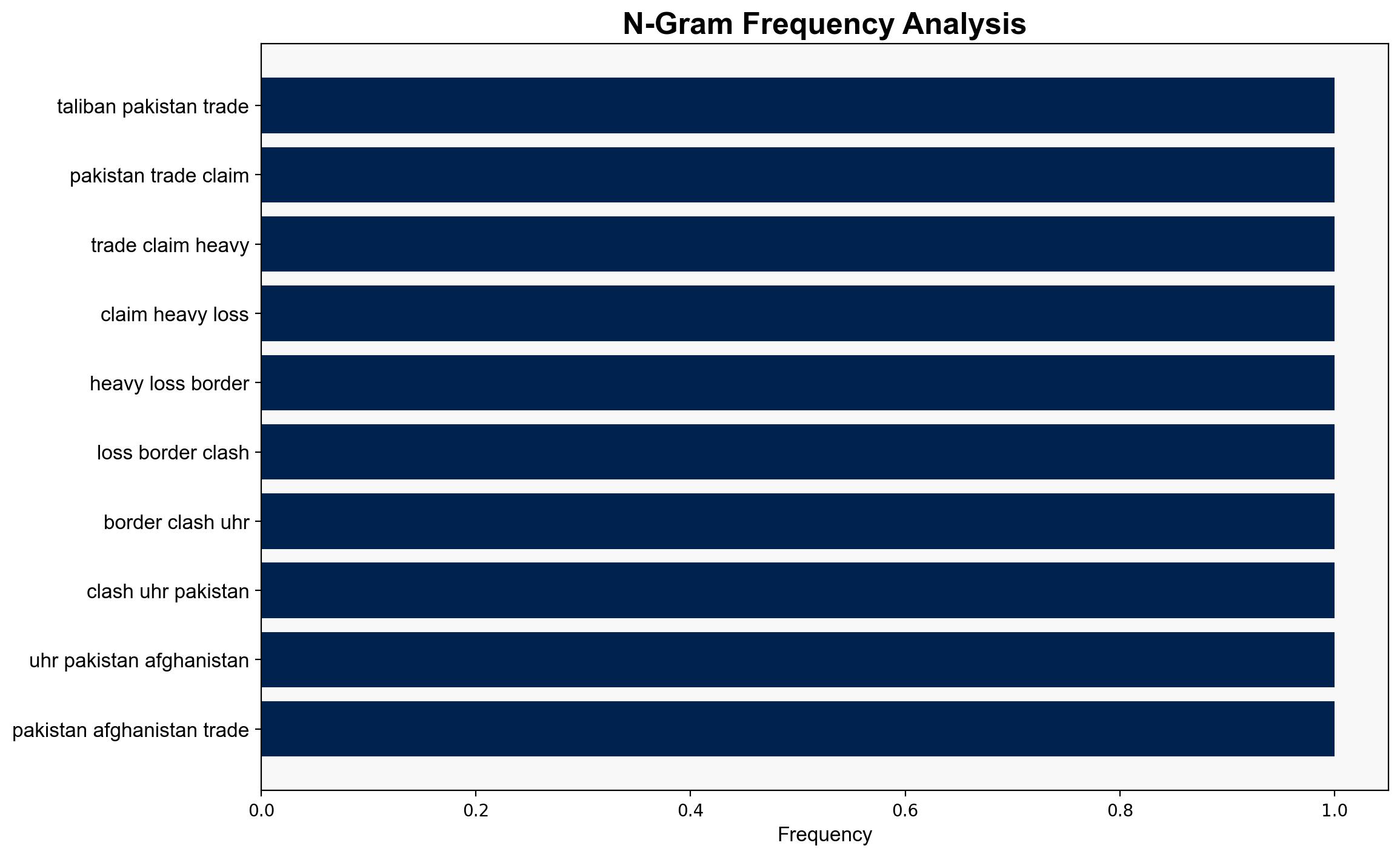Taliban Pakistan trade claims of heavy losses in border clashes – Dpa-international.com
Published on: 2025-10-12
Intelligence Report: Taliban Pakistan trade claims of heavy losses in border clashes – Dpa-international.com
1. BLUF (Bottom Line Up Front)
The most supported hypothesis is that the border clashes between Pakistan and Afghanistan are a result of escalating tensions due to unresolved territorial disputes and mutual accusations of harboring terrorist elements. The confidence level in this hypothesis is moderate due to the complexity of the regional dynamics and the lack of independently verified information. It is recommended to engage in diplomatic dialogue facilitated by neutral third parties to de-escalate tensions and prevent further conflict.
2. Competing Hypotheses
1. **Hypothesis A**: The clashes are primarily driven by Pakistan’s efforts to curb cross-border terrorism, with the Afghan Taliban allegedly providing sanctuary to anti-Pakistan militants.
2. **Hypothesis B**: The clashes are a result of Afghan Taliban’s defensive posture against perceived Pakistani aggression, with accusations of Pakistan harboring ISKP elements as a pretext for military engagement.
Using ACH 2.0, Hypothesis A is better supported by Pakistan’s consistent narrative of self-defense and historical context of cross-border militancy. Hypothesis B lacks corroborative evidence and relies heavily on Afghan Taliban’s claims, which could be strategically motivated.
3. Key Assumptions and Red Flags
– **Assumptions**: Hypothesis A assumes Pakistan’s military actions are purely defensive, while Hypothesis B assumes Afghan Taliban’s claims of Pakistani aggression are accurate.
– **Red Flags**: Both sides have vested interests in portraying themselves as victims, potentially leading to biased narratives. The lack of independent verification of claims is a significant blind spot.
– **Inconsistent Data**: Conflicting casualty reports and unverified claims of territorial gains raise questions about the reliability of the information.
4. Implications and Strategic Risks
– **Escalation Risks**: Continued clashes could destabilize the region, drawing in external actors and exacerbating existing tensions.
– **Geopolitical Impact**: Strained relations may affect regional alliances and economic cooperation, particularly impacting trade routes and border security.
– **Terrorism Threat**: The conflict could provide a breeding ground for terrorist groups to exploit the chaos and further their agendas.
5. Recommendations and Outlook
- Facilitate diplomatic engagement between Pakistan and Afghanistan, possibly mediated by Qatar or Saudi Arabia, to address mutual security concerns.
- Enhance intelligence-sharing mechanisms to verify claims and reduce misinformation.
- Scenario Projections:
- **Best Case**: Successful diplomatic intervention leads to a ceasefire and joint counter-terrorism efforts.
- **Worst Case**: Escalation into a broader conflict involving regional powers.
- **Most Likely**: Continued sporadic clashes with intermittent diplomatic efforts to de-escalate.
6. Key Individuals and Entities
– Asif Ali Zardari
– Shehbaz Sharif
– Zabihullah Mujahid
– Shahab al-Muhajir
7. Thematic Tags
national security threats, cybersecurity, counter-terrorism, regional focus




